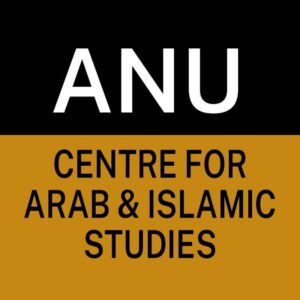Central Asian states are still in the emergent process of nation–building and yet their populations are rapidly growing. Consequently, many youth from the region seek economic opportunities abroad. According to the Global Migration Data Portal, as of 2021, the Central Asian population stands at 75.9 million, with just over 10% of the population – 7.8 million people – categorized as international migrants. Many migrants move internally within the region, often to Russia or Kazakhstan, yet increasingly the Asia-Pacific – including China, South Korea and Japan – are seen as viable and attractive migrant destinations. Only small numbers of Central Asia migrants make their way to Australia yet the experience in the broader Asia Pacific suggests that this could be a missed opportunity for Australia to benefit from skilled Central Asian migrants.
The land-locked former Soviet states of Central Asia share many similarities when it comes to migration, with the exception of Kazakhstan. Kazakhstan is both a migrant-sending and receiving country, whereas the remaining four states are migrant-sending and remittance-dependent nations. Russia is the main recipient of Central Asian migrants with approximately 6.6 million migrants residing in the former Soviet heartland in 2016; a figure that is rapidly increasing with an estimated 9.5 million Central Asian migrants living in Russia in 2019. After Russia, the main receiving nations for Central Asia migrants, are Türkiye, the Arab States of the Gulf, China, and South Korea, which have all seen significant numbers of incoming Central Asian migrants in recent years.
Amidst the Russian-Ukrainian War of 2022, the European Bank for Reconstruction and Development (EBRD) expected a decline in Central Asian migration and remittances from Russia. However, contrary to expectations, remittance inflows increased significantly from USD 15.3 billion in 2021 to USD 25.8 billion in 2022. The war also triggered an in-flow of Russian migrants flows into Central Asian countries, primarily Kazakhstan (500,000 Russians), Uzbekistan (395,000 Russians) and Kyrgyzstan (184,000 Russians).
In the past, Russia has been the primary destination for Central Asian migrants, who have predominantly moved to Russia due to shared historical connections, linguistic opportunities, and the obvious geographical proximity of the two regions. Migrants relocating to Russia are typically laborers, with the bulk coming from Uzbekistan (7,371,199 migrants in 2019), but significant numbers also from Tajikistan (3,972,367 migrants), Kyrgyzstan (1,544,399 migrants) and a small number from Kazakhstan (407,474 migrants) and Turkmenistan (11,628 migrants). Within Central Asia, Kazakhstan also receives migrants, forming a regional subsystem. Kazakhstan’s capacity to host migrants is attributed to its economic opportunities, driven by an oil-driven boom, higher wages, and better infrastructure and better living standards compared to its neighbours.
In addition to labourers, Russia also attracts significant numbers of student migrants. As of 2019, Russian universities hosted 328,793 students from Kazakhstan, 65,217 from Kyrgyzstan, 123,897 from Tajikistan, 141,629 from Turkmenistan, and 137,866 from Uzbekistan. Central Asian students and workers often face challenging conditions working in shadow economy without legal protection. They typically rely on informal channels for necessities and employment (i.e., doctor’s appointments or renewal of visas), predominantly in construction, taxi services, and house-cleaning. Yet the preference for Russian higher education is driven not by pedagogical excellence, but rather by job prospects during and after education. Therefore, despite present xenophobia expressed towards Central Asian students and workers, the youth of the region have continued migrating to Russia for the opportunities to remit money.
Due to the challenges faced in Russia, Türkiye was increasingly becoming a favored destination for Central Asian migrants, particularly from Turkmenistan, due to cultural and linguistic affinities between the two nations. Previously, Türkiye welcomed around 20,000-25,000 Turkmen migrants annually. However, this number declined after the revocation of the visa-free entry for Turkmen citizens. Turkmen and Uzbek migrants dominate Turkish labor markets, second only to Syrian migrants. Outside Russia and Turkey, Germany is the second most popular destination, with approximately 1.3 million Central Asian migrants, followed by Ukraine, hosting 529,000 regional migrants as of 2020.
However, with the introduction of flexible visa policies, an increasingly higher number of migrants from Central Asian are relocating to the Asia Pacific for work and/ or study. The Asia-Pacific region has historically not been a popular destination for students or labour migrants from Central Asia due to its geographic distance and language differences but also visa restrictions. Changes in visa policies is shifting this trend with some countries in the Asia Pacific region now more accessible to Central Asian migrants with South Korea and Japan increasingly regarded as attractive destinations. Both countries have recently revised their visa policies towards Central Asian migrants as part of broader economic agreements but also to address demographic decline from aging populations.
Between 2016 and 2019, South Korea received 3,250 students from Central Asia in 2019, with the largest cohort being from Uzbekistan (2,730 students). The country also welcomed 5,718 laborers from the region, 92% of whom were from Uzbekistan. Japan showed similar increasing trends, though the numbers were smaller, with 933 student migrants and 405 labor migrants in the same period. Many of these labourers are working in skilled roles in the fields of engineering and IT. The number of Central Asian migrants relocating to Australia has also significantly grown with the Australian Bureau of Statistics recording a near fifty fold increase from 2014/2015 and 2019/2020. Like Japan and South Korea, Australia faces an aging population in part due to declining fertility rates. Amendments to streamline visa applications processes and remove barriers to visa access could see Australia, like Japan and South Korea, increase its intake of Central Asian migrants. However, anecdotal evidence suggests that Central Asian migrants to Australia are often from well-off families, as the initial cost of migration is around USD $10,000. Combined with the recently introduced Australian Government caps on the number of international students arriving each into Australia, these two factors could deter future Central Asian migrants to Australia, at a time when our neighbours in the Asia Pacific appear to be benefiting from skilled migrants from the region to address demographic decline.
The views expressed in the Near East Policy Forum are those of the authors and do not represent the views of the Near East Policy Forum or any of its partner organisations.




